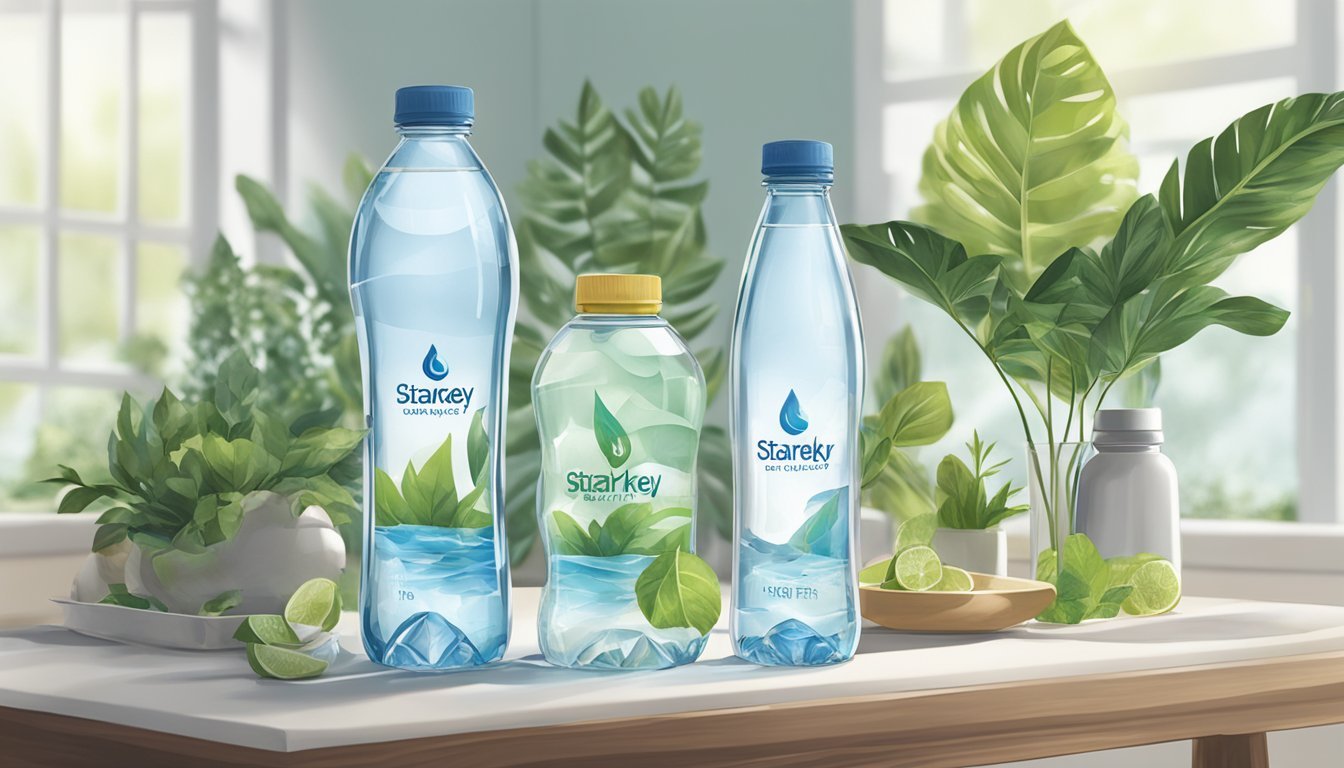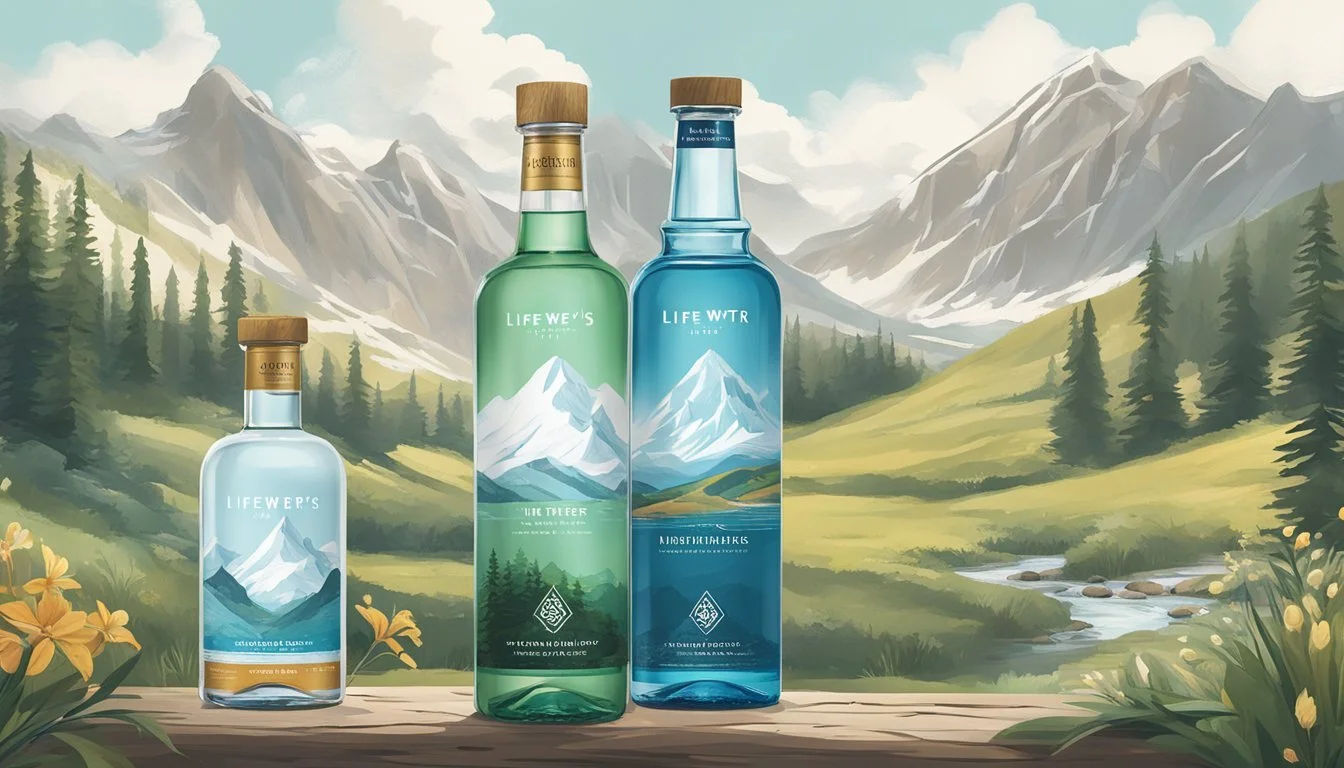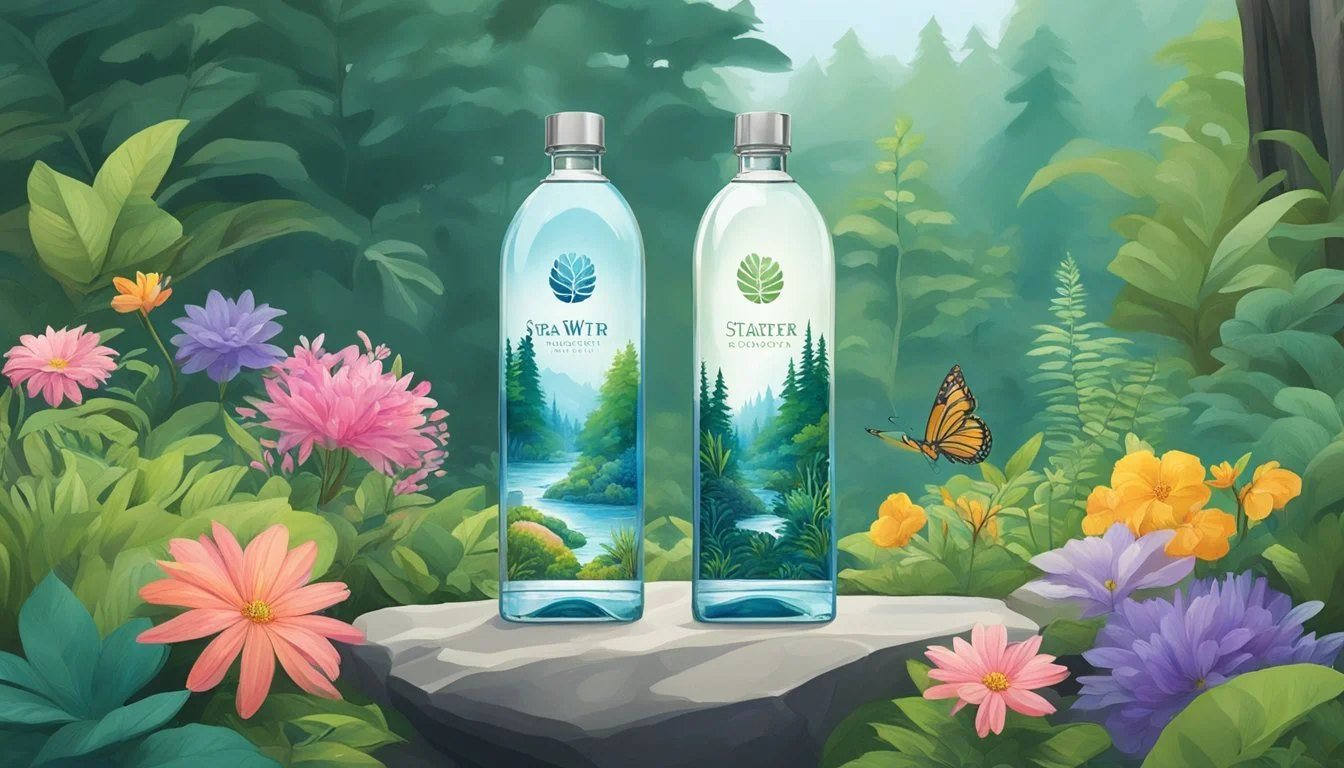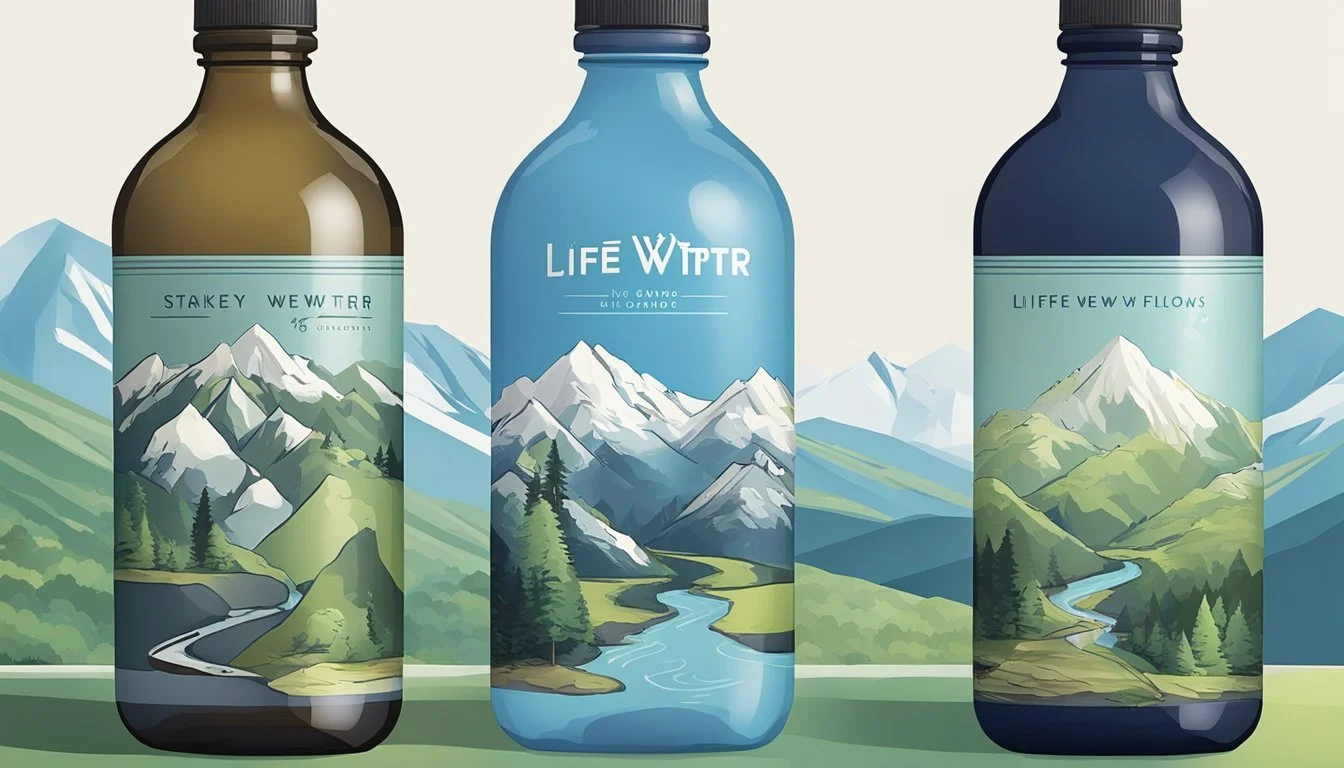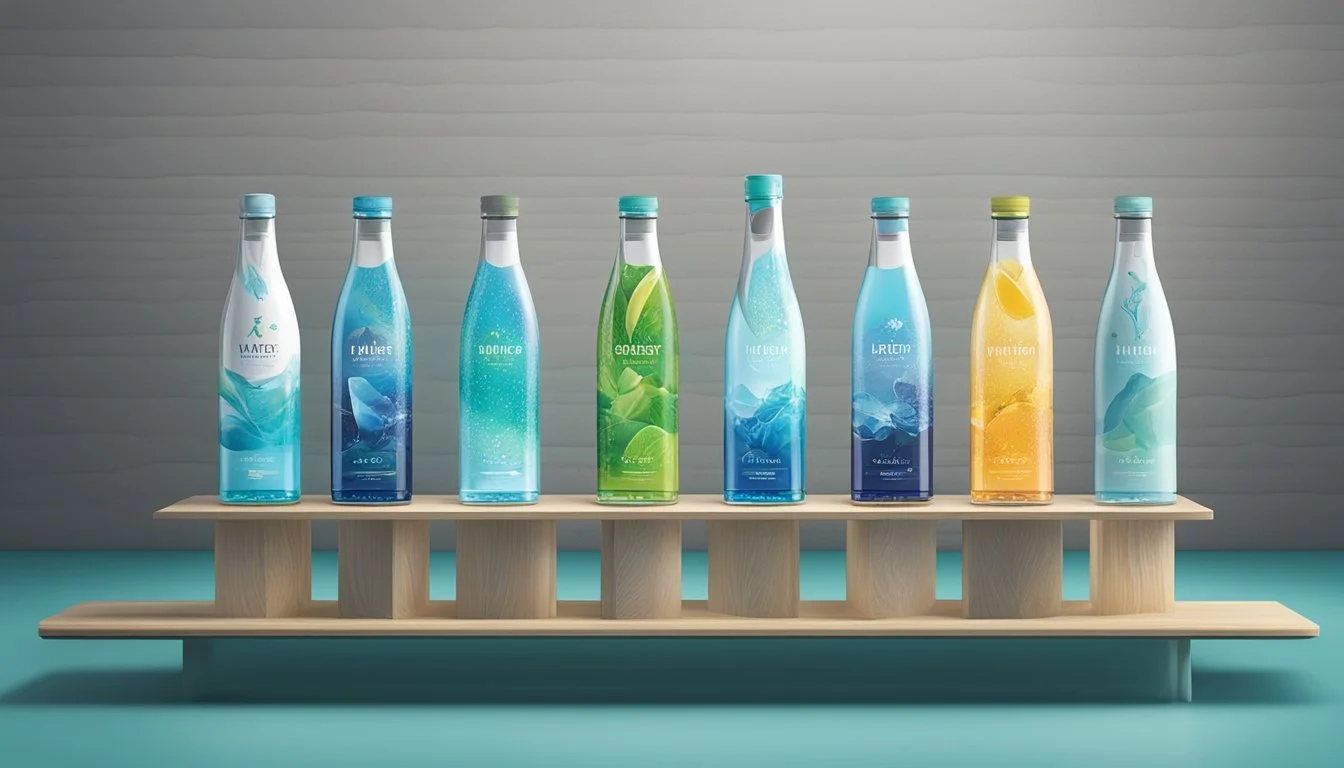LIFEWTR vs. Starkey
A Clear Comparison of Bottled Water Brands
When it comes to choosing premium bottled water, LIFEWTR and Starkey are two brands that frequently come into discussion. LIFEWTR, known for its artistic bottle designs, offers water with a pH level of 6.4 to 7.4, which is slightly acidic to neutral. Starkey, on the other hand, prides itself on its high-quality, pH-balanced water sourced from natural springs.
LIFEWTR's marketing emphasizes both art and hydration, positioning itself as a lifestyle choice. Starkey focuses more on the purity of its water, boasting a robust mineral profile and natural alkalinity. While both claim to offer clean, refreshing hydration, the choice between the two can come down to personal taste preferences and brand appeal.
If you're leaning towards a more aesthetic experience paired with hydration, LIFEWTR may be the better choice. For those who prioritize natural sourcing and a balanced mineral content, Starkey stands out. By comparing the unique features and benefits of each brand, consumers can make an informed decision based on their individual needs and values.
Overview of Bottled Water Industry
The bottled water industry has experienced significant growth in recent years. Major brands include Fiji, Smartwater, Dasani, Aquafina, Evian, and Pure Life. These brands are owned by industry giants like Coca-Cola, PepsiCo, and Nestlé.
Coca-Cola: Dasani and Smartwater.
PepsiCo: Aquafina and LIFEWTR.
Nestlé: Pure Life and other regional brands.
Bottled waters are marketed for their purity and taste. Companies often highlight unique features, such as mineral content or filtration processes. Fiji water, for example, is known for its distinctive mineral profile.
The environmental impact of bottled water is increasingly scrutinized. Production and disposal of plastic bottles contribute to pollution. Many brands are exploring sustainable practices, such as recycled materials and new bottle designs.
Premium and alkaline water brands, like LIFEWTR and Essentia, cater to consumers seeking enhanced hydration. These products typically command higher prices due to perceived health benefits and branding efforts.
In retail, placement and presentation are crucial. Ambient racks and prime shelf locations can drive higher sales. Consumer preferences often align with accessibility and marketing strategies employed by companies.
Bottled water continues to position itself as a convenient and often preferred alternative to tap water, which contributes to its robust market presence.
Understanding Water Quality and Sources
A comprehensive comparison of LIFEWTR and Starkey involves examining their water sources, filtration methods, and the resulting mineral content. These factors play essential roles in determining the overall quality and potential health benefits of each brand.
Origin and Sources
LIFEWTR sources its water primarily from public water systems, which undergo advanced purification. On the other hand, Starkey sources its water from a natural spring nestled 2 miles deep within the earth in Idaho.
The difference in sources, from public systems for LIFEWTR to an underground spring for Starkey, reflects distinct approaches in water quality and natural mineral content.
Filtration and Purification Processes
LIFEWTR uses a combination of reverse osmosis and specific filtration processes to ensure the water is purified and safe for consumption. This process removes contaminants and ensures high purity, resulting in clear, crisp water.
Starkey relies on minimal filtration since its water is naturally sourced with inherent purity. It may undergo basic filtration to retain beneficial minerals while eliminating impurities. This minimal processing aligns with maintaining the water's natural character.
Mineral Content and Health Benefits
LIFEWTR adds minerals post-purification to enhance taste and provide potential health benefits. These added minerals typically include magnesium, calcium, and potassium, contributing to overall wellness.
Starkey’s water is mineral-rich due to its natural spring source. It inherently contains beneficial minerals such as silica, bicarbonate, and trace elements that promote health, often referred to as "natural mineral water." This composition can provide benefits like improved bone health and digestion.
Brand Profiles: LIFEWTR and Starkey
LIFEWTR and Starkey are two distinctive bottled water brands with unique offerings. LIFEWTR focuses on engaging consumers through artistic expression, while Starkey is known for its distinct mineral content and taste.
LIFEWTR: Brand Values and Product Range
LIFEWTR stands out with its emphasis on art and creativity. Each bottle features a label designed by emerging artists, which provides a platform for artistic expression. This unique approach blends creativity with hydration, appealing to consumers who appreciate both.
In terms of product range, LIFEWTR offers pH-balanced water, typically within the range of 6.4 to 7.4. This neutral to slightly acidic pH is designed to align with the body's natural pH levels, promoting balance and wellness. Additionally, LIFEWTR is purified using advanced filtration methods, ensuring clean and refreshing flavor.
LIFEWTR's commitment to sustainable practices is evident through its use of recyclable packaging. The brand also engages in various community and environmental initiatives, reinforcing its dedication to social responsibility.
Starkey: Brand Values and Product Range
Starkey focuses on delivering a unique tasting experience enriched with natural minerals. Sourced from a deep thermal spring, Starkey water has a distinctive mineral composition that gives it a signature taste which some describe as savory.
The product range includes their flagship vapor distilled water, designed to provide unmatched purity by removing impurities and contaminants. This results in a clean and crisp flavor profile that sets it apart from competitors.
Starkey emphasizes natural sourcing and environmental sustainability. The brand prides itself on minimal processing, ensuring that the natural qualities of the spring water are preserved. Packaging is designed to be eco-friendly, reflecting a commitment to environmental responsibility. Starkey continues to attract consumers who favor a natural and distinctive hydration experience.
Taste and Hydration
In comparing LIFEWTR and Starkey bottled waters, both taste profile and hydration efficiency, including their electrolyte content, are crucial. Each brand offers unique taste characteristics and hydration benefits, influenced by their composition of minerals like magnesium, potassium, and calcium.
Water Taste Profiles
LIFEWTR provides a crisp, clean taste. Its balanced pH of around 6.5 to 7.4 supports a refreshing drinking experience. Consumers often describe it as slightly acidic to neutral but satisfying.
Starkey water, sourced from geothermal springs, presents a smooth and silky taste. It tends to have a slightly higher mineral content, which can give it a distinctive, full-bodied flavor that some find appealing.
Both brands aim for purity, but their mineral contents contribute differently to their overall taste.
Hydration and Electrolyte Content
LIFEWTR contains added electrolytes for taste, including a mix of magnesium, potassium, and calcium. These minerals enhance hydration by helping the body maintain fluid balance, making it effective for replenishing lost electrolytes during physical activities.
Starkey water is naturally high in silica and other minerals, providing a luxurious hydration experience. Its natural composition aids in hydration by supporting the body's electrolyte balance without additional enhancement.
The choice between LIFEWTR and Starkey will depend on personal preference for taste and specific hydration needs. Both offer substantial benefits with their unique mineral compositions.
Packaging and Environmental Considerations
Choosing between LIFEWTR and Starkey involves understanding their packaging materials and their environmental impact. This section examines the design choices and sustainability efforts of each brand.
Bottle Design and Materials
LIFEWTR bottles are made from 100% recyclable plastic. They use PET plastic, which is known for its durability and light weight. LIFEWTR bottles are also BPA-free, ensuring no harmful chemicals leach into the water.
Starkey offers water in high-quality plastic bottles, but also provides an option in glass bottles. This choice caters to consumers seeking alternatives to plastic. Starkey’s glass bottles enhance the user experience with a premium feel and are easily recyclable.
Both brands clearly emphasize user health with their BPA-free packaging. The choice between plastic and glass can influence a consumer's preference based on their environmental values and personal needs.
Environmental Impact and Sustainability
LIFEWTR prioritizes recyclability with its 100% recyclable plastic bottles. Though plastic recycling is not foolproof, LIFEWTR's use of PET plastic is a step towards reducing waste. Additionally, LIFEWTR's production focuses on minimizing its carbon footprint.
Starkey stands out with its use of glass bottles, a highly sustainable option as glass is recyclable indefinitely. Even their plastic bottles are designed to be easily recycled. By offering glass packaging, Starkey reduces plastic pollution significantly more than its competitors that exclusively use plastic.
For both brands, their efforts at sustainability are noteworthy. However, Starkey’s glass option may appeal more to eco-conscious consumers, while LIFEWTR's recyclable plastic offers convenience without sacrificing environmental responsibility.
Water Purity and Safety Standards
When comparing LIFEWTR and Starkey, evaluating water purity and safety standards is crucial. This includes understanding regulatory compliance and a thorough assessment of contaminants and purity.
Regulatory Compliance
Both LIFEWTR and Starkey must adhere to stringent regulatory standards to ensure their bottled water is safe for consumption. The Environmental Protection Agency (EPA) sets the benchmarks for water quality, including maximum contaminant levels.
LIFEWTR and Starkey are subject to regular testing and certification by the FDA. They must meet or exceed specific criteria, ensuring water is free from harmful contaminants. Compliance with these regulations guarantees that both brands provide safe drinking water.
Starkey notably adheres to additional quality assurance protocols. These might include third-party testing and certification. Such practices enhance consumer confidence in the brand's commitment to safety and purity.
Contaminants and Purity Assessments
Purity assessments for LIFEWTR and Starkey involve analyzing for various contaminants. Common tests check for heavy metals, bacteria, and chemical residues. For instance, LIFEWTR typically undergoes filtration processes that remove impurities, ensuring high purity.
Starkey is known for its high mineral content. While this can enhance flavor, it also requires meticulous testing to maintain safety. Contaminants like lead, nitrates, and others are monitored to keep levels within permissible limits.
Both brands maintain detailed reports on their water sources and purification methods. This transparency is essential for consumers who prioritize purity and safety. Regular assessments help reassure customers of the quality and safety of their chosen bottled water.
Additional Features and Consumer Choices
Both LIFEWTR and Starkey promise unique attributes that set them apart in the crowded bottled water market. They cater to varying consumer trends and preferences, offering distinct experiences through design, pH level, and other characteristics.
Unique Selling Propositions
Design and Artwork: LIFEWTR emphasizes its art-infused packaging, showcasing the work of emerging artists. Each bottle features unique designs, adding an artistic touch to hydration. This approach appeals to consumers who appreciate creativity and visual appeal in everyday products.
Natural Source and pH Level: Starkey water is sourced from natural springs, boasting a high pH level of around 9.6 to 10, enhancing its alkalinity. This pH level appeals to those seeking alkaline water for its purported health benefits, distinguishing Starkey as a naturally sourced, high-pH option.
Vapor Distillation Process: In contrast to LIFEWTR's aesthetic angle, Starkey offers a refined process focus. Starkey’s water undergoes minimal processing, while LIFEWTR provides purified water with balanced electrolytes, making it ostensibly more health-oriented with a neutral to slightly acidic pH range.
Consumer Trends and Preferences
Visual Appeal and Brand Loyalty: Consumers gravitate towards LIFEWTR for its aesthetic packaging and the brand's association with art and creativity. The changing bottle designs create a collectible aspect, appealing to those who value both function and form.
Health Conscious Choices: Starkey attracts consumers prioritizing natural water sources and higher pH levels. This segment values the perceived purity and health benefits of alkaline water, often leading to brand preference based on the water's natural properties.
Flavor and Usability: Both brands offer water that is generally described as clean and refreshing. Starkey's natural water source is appealing for its pure flavor, while LIFEWTR’s balanced electrolyte inclusion may offer a subtle, enhanced taste that some consumers prefer for daily hydration.
In conclusion, these attributes define each brand's identity and cater to specific consumer demographics, underlining the distinct differences that guide consumer choices.
More About LIFEWTR
Icelandic Glacial vs LIFEWTR: Which Bottled Water is Better?
LIFEWTR vs Kirkland Signature: Which Bottled Water is Better?
LIFEWTR vs Mountain Valley Spring Water: Which Bottled Water is Better?
LIFEWTR vs Richard's Rainwater: Which Bottled Water is Better?
LIFEWTR vs Whole Foods Italian Still Mineral water: Which Bottled Water is Better?
More About Starkey
Icelandic Glacial vs Starkey: Which Bottled Water is Better?
Mountain Valley Spring Water vs Starkey: Which Bottled Water is Better?
Starkey vs Kirkland Signature: Which Bottled Water is Better?
Starkey vs Richard's Rainwater: Which Bottled Water is Better?
Starkey vs Whole Foods Italian Still Mineral water: Which Bottled Water is Better?

